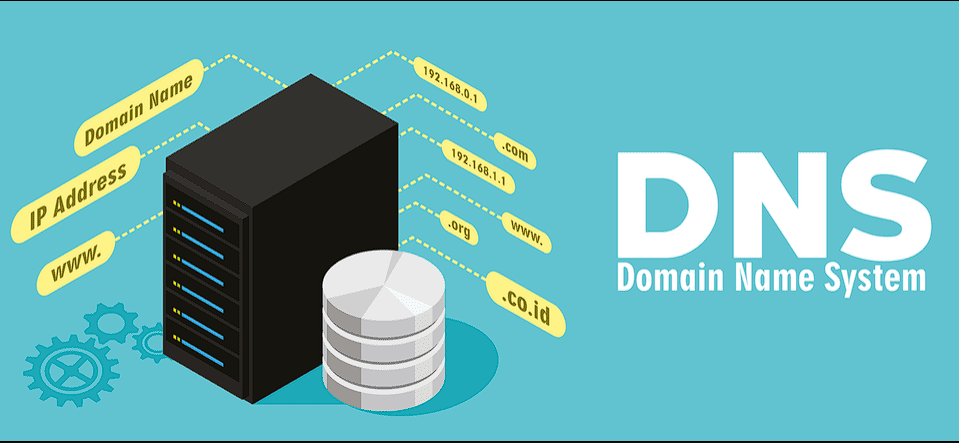A domain name is a human-readable address that is used to access websites on the internet. It’s a user-friendly way to identify and locate websites instead of using numerical IP addresses, which computers use to communicate with each other. Domain names make it easier for people to remember and find websites by using words or phrases instead of a string of numbers.
Here are the key components of a domain name:
A- Top-Level Domain (TLD): This is the part of the domain name that comes after the last dot. Examples of TLDs include “.com,” “.org,” “.net,” “.edu,” “.gov,” “.uk,” and so on. TLDs can indicate the type of organization or the geographical location associated with the website.
B- Second-Level Domain: This is the main part of the domain name that you choose, and it typically represents your brand, company name, or website’s purpose. For example, in the domain “example.com,” “example” is the second-level domain.
C- Subdomain: Subdomains are optional parts of a domain name that come before the second-level domain and are separated by a dot. They are used to organize and categorize content within a website. For instance, in “blog.example.com,” “blog” is a subdomain of “example.com.”
For example, in the domain name “www.example.com”:
“www” is a subdomain.
“example” is the second-level domain.
“com” is the top-level domain.
Domain names play a significant role in branding and online identity. They help establish a memorable and easily recognizable online presence. When users enter a domain name in their web browsers, the browser’s DNS system translates the domain name into the corresponding IP address of the web server where the website’s files are stored. This allows users to access the website by typing its human-readable name instead of the numerical IP address.
Domain names are registered and managed through domain registrars. When you want to use a specific domain name, you need to check if it’s available and then register it for a certain period, usually annually. It’s important to choose a domain name that’s relevant to your website’s content or purpose and is easy for users to remember.
DNS (Domain Name System):

The Domain Name System (DNS) is a fundamental technology used on the internet to translate human-readable domain names into the numerical IP addresses that computers use to identify each other. In simpler terms, DNS acts as a directory that allows you to access websites by their familiar names (like www.example.com) instead of requiring you to remember the IP addresses (like 192.168.1.1) associated with them.
Here’s how DNS works

Domain Name Resolution: When you type a URL (Uniform Resource Locator) or click a link in your web browser, your computer sends a request to a DNS resolver (often provided by your internet service provider or a third-party DNS service).
Recursive Resolution: The DNS resolver starts a process known as recursive resolution. It first checks its local cache to see if it already knows the IP address for the requested domain. If not, it starts a chain of queries to find the IP address.
Root DNS Servers: If the resolver doesn’t have the information, it contacts a root DNS server. The root servers know the locations of authoritative DNS servers for each top-level domain (TLD), such as “.com,” “.org,” “.net,” etc.
TLD DNS Servers: The root DNS server points the resolver to the appropriate TLD DNS server based on the TLD of the requested domain. For example, if the requested domain is “www.example.com,” the resolver is directed to the “.com” TLD DNS server.
Authoritative DNS Servers: The TLD DNS server then points the resolver to the authoritative DNS server for the specific domain, in this case, “example.com.” The authoritative server stores the actual IP address associated with the domain.
IP Address Retrieval: The authoritative server provides the IP address to the resolver, which then caches the information locally and returns the IP address to your computer.
Website Access: Armed with the correct IP address, your computer can now establish a connection to the web server hosting the website you wanted to access. The web server sends the requested web page back to your browser, which then displays the content.
DNS plays a critical role in the functionality and accessibility of the internet. It allows users to interact with websites using human-readable names, simplifying the browsing experience. It also enables the dynamic nature of the internet, where websites can change their hosting servers without users needing to update their bookmarks or memorize new IP addresses. DNS also contributes to the overall speed and efficiency of internet communication by caching frequently accessed IP addresses locally, reducing the need for repeated queries.
Website Access

Website access refers to the process by which users interact with and view content on a particular website. It involves using a web browser or other internet-enabled device to connect to a web server and retrieve the web pages, images, videos, and other resources that make up the website’s content. Here’s a step-by-step overview of how website access works:
Entering the URL: Users initiate the process by entering the URL (Uniform
Resource Locator) of the website they want to access into the address bar of
their web browser. The URL typically starts with “http://” or “https://”
followed by the domain name (e.g., “www.example.com”).
DNS Resolution: Once the URL is entered, the browser sends a request to a DNS (Domain Name System) resolver to translate the human-readable domain name into the corresponding IP address of the web server where the website’s files are stored. This translation allows the browser to locate the correct server on the internet.
Establishing a Connection: The browser establishes a connection to the web
server using the IP address obtained from the DNS resolution process. It uses
the HTTP (Hypertext Transfer Protocol) or HTTPS (HTTP Secure) protocol to
communicate with the server.
Sending a Request: The browser sends an HTTP request to the web server,
specifying the specific web page or resource (such as an image or video) it
wants to access. This request includes information like the type of content the
browser can accept.
Server Processing: The web server receives the request and processes it. It
locates the requested resource, processes any server-side code (such as PHP
or JavaScript), and gathers the necessary data.
Sending the Response: The web server sends back an HTTP response
containing the requested web page or resource, as well as any additional files
required to properly display the content. This response includes metadata,
such as HTTP headers, status codes, and the actual content of the web page.
Rendering the Content: The browser receives the HTTP response and begins
rendering the web page. It interprets the HTML (Hypertext Markup Language)
to structure the content, processes CSS (Cascading Style Sheets) to style the
layout, and executes JavaScript for interactive functionality.
Displaying the Web Page: The browser displays the fully rendered web page
to the user, making it visually accessible and interactive. Users can navigate
the website, click on links, submit forms, and interact with various elements.
Resource Loading: As users interact with the web page, the browser may
send additional requests to the server for images, videos, scripts, stylesheets,
and other resources referenced by the page. These resources contribute to the overall presentation and functionality of the website.
Conclusion
Website access is a dynamic process involving multiple steps and technologies. Users can interact with websites from various devices, including desktop computers, laptops, smartphones, and tablets, using different web browsers. The seamless functioning of these steps ensures that users can easily access and navigate the content of the websites they visit.


